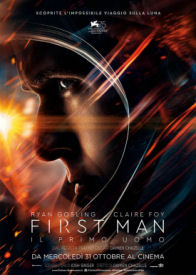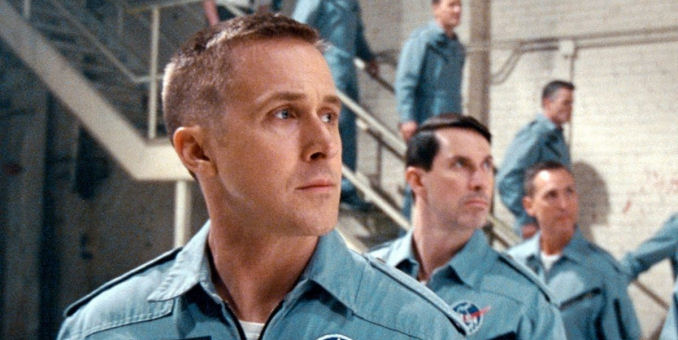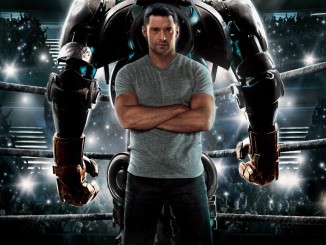 The greatest human achievement of the 20th century, or perhaps any century so far, was the Apollo space missions that culminated with the landing on the surface of the moon by Neil Armstrong and Buzz Aldrin and Armstrong becoming the first human to set foot on a non-terrestrial world. Damien Chazelle’s First Man traces Armstrong’s journey from engineer and test pilot to astronaut in NASA’s Gemini and then Apollo space programs.
The greatest human achievement of the 20th century, or perhaps any century so far, was the Apollo space missions that culminated with the landing on the surface of the moon by Neil Armstrong and Buzz Aldrin and Armstrong becoming the first human to set foot on a non-terrestrial world. Damien Chazelle’s First Man traces Armstrong’s journey from engineer and test pilot to astronaut in NASA’s Gemini and then Apollo space programs.
But Armstrong, who passed away in 2015, was by his nature a rather private person. He seldom gave interviews or participated in events or documentaries celebrating the achievements of the space program. James Hansen’s book, First Man: The Life Of Neil A. Armstrong, which serves as the basis of this film, is probably the definitive work on the man, the result of many rare hours of interviews with Armstrong and his family. But even then, we still don’t get much a glimpse into the inner workings of the man. This can prove a hindrance to himself when we see that he can’t reach out emotionally to his two sons following the death of his two-year-old daughter Karen or when he has to explain to them the dangers of his upcoming mission to the moon. But that cool detachment saves his life more than once when a life threatening – and they were all life threatening – malfunction or unexpected problem arises while in space.
So while Chazelle isn’t able to give us too deep a look at Armstrong’s psychology, he is able to put us right next to him in the capsule for these missions. As a kid I went through an “astronaut phase” where I read everything I could get my hands on about the Gemini and Apollo programs. On a family trip to Florida, we made the stop at Cape Kennedy and I got to see the giant Saturn rockets and a trip to the Smithsonian Air and Space Museum in Washington DC got me close to the Mercury capsule. But Chazelle really gets across the dangers inherent in flying these craft. As we sit in the capsule next to Armstrong, our view of the outside world limited to a thin sliver of a window, an ominous creaking noise and a slow pan across a row of bolts holding two sections of the module together reinforce the fragility of these vehicles. It is a fragility that not even having been in close contact with the actual craft I would have suspected. It is also something we generally don’t see in films about this time in NASA’s history and this de-mythologizing helps to underline the humanity of the characters as well as raise the stakes of the dangers they are facing.
With Armstrong (as played by Ryan Gosling) so closed off, it falls on Clare Foy in the role of his wife Janet to carry the emotional through line of the film. It is the traditional role of the sturdy, supportive stay-at-home spouse that we see in films like this. The part is written a little bit meatier than usual, but it is still not enough to inject the film with what is needed. Foy works hard to get there, but through no fault of her own, can’t quite make it.
A final note – Prior to the release of the film there was a small hue and cry from some corners of the internet who most likely hadn’t seen the film at the time that there wasn’t a specific scene showing the planting of the American flag on the moon by Armstrong and Aldrin. This soon got inflated to a cry that there was no American flags at all in the film and other crazy nonsense from those who like to peddle such balderdash. Well, the American flag is seen plenty in the film and seen where it is appropriate. And while First Man doesn’t have a specific moment showing the planting of the flag on the lunar surface, we do see it in various shots while the two astronauts are out exploring. But the film isn’t about the American space race with the Russians. If you want a more patriotic look at the early days of the space program, I would recommend The Right Stuff. While Chazelle’s film ends at a similar destination, it is not about the nation that made the trip, but the man.





